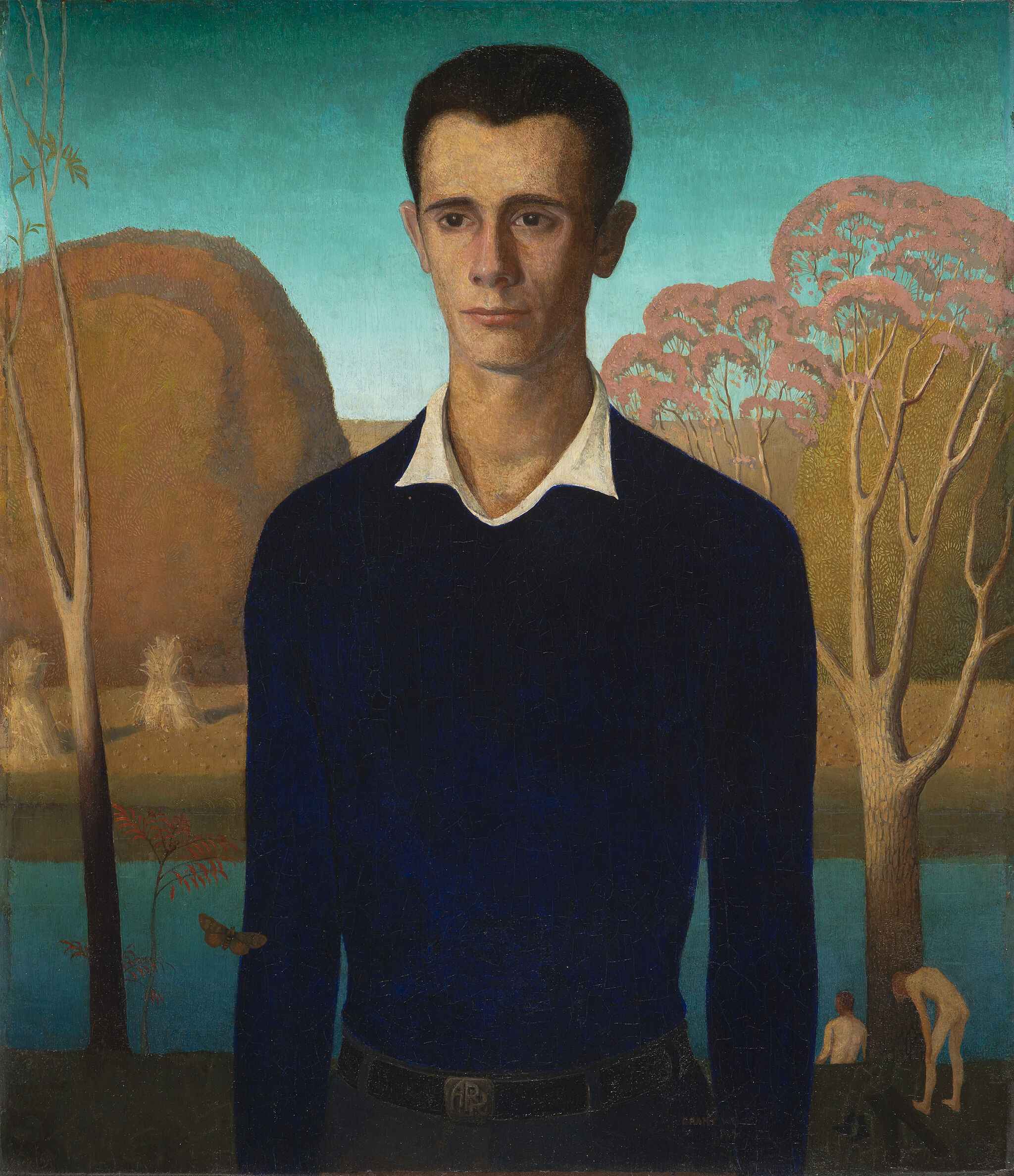Grant Wood: American Gothic and Other Fables | Art & Artists
Mar 2–June 10, 2018
Grant Wood: American Gothic and Other Fables | Art & Artists
Portraits
3
By the late 1920s, Grant Wood had come to believe that the emergence of a rich American culture depended on artists breaking free of European influence and expressing the specific character of their own regions. For him, it was Iowa, whose rolling hills and harvested cornfields served as the background for his earliest mature portraits, those of his mother and Arnold Pyle. In Europe, he had admired Northern Renaissance painting by artists such as Hans Memling and Albrecht Dürer. By the time he painted American Gothic in 1930, he had concluded that the hard-edge precision and meticulous detail in their art could be used to convey a distinctly American quality, especially suggestive of the Midwest. Joined with Iowan subject matter, it became the basis of his signature style.
Wood felt that all painting, portraiture included, must suggest a narrative in order to engender the emotional and psychological engagement he associated with successful literature. Consequently, he included images that hinted at the life and character of the depicted subject, taking care to avoid anecdotal illustration by painting archetypes rather than individuals. He left the “props” in his portraits intentionally ambiguous, making the stories they intimate so enigmatic that they defy ready explanation; they are puzzles to be deciphered by viewers based on their individual attitudes and experiences. As a result, Wood’s portraits have historically invited multiple interpretations.
Arnold Comes of Age (Portrait of Arnold Pyle), 1930
Wood completed this portrait of his studio assistant and former junior high school student Arnold Pyle during a moment of aesthetic transition, after he had resolved to paint Iowa subject matter but while he was still using a softly atmospheric style. Made to commemorate Pyle’s having turned twenty-one, Wood included images that referenced his subject’s transition into adulthood: the butterfly, a common image of metamorphosis, and the river of life that here separates youth, as represented by the two male nudes in the foreground, from maturity, symbolized by the harvested corn in the background. Despite the celebratory occasion, the work is invested with a poignant feeling of melancholy and longing.

